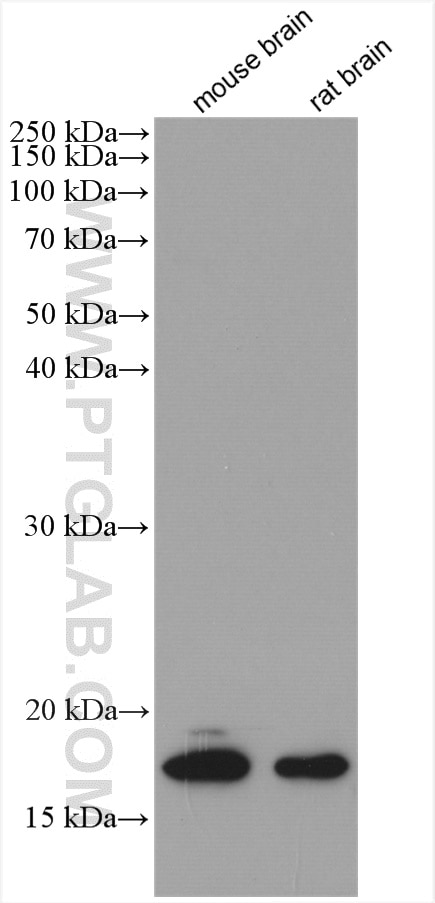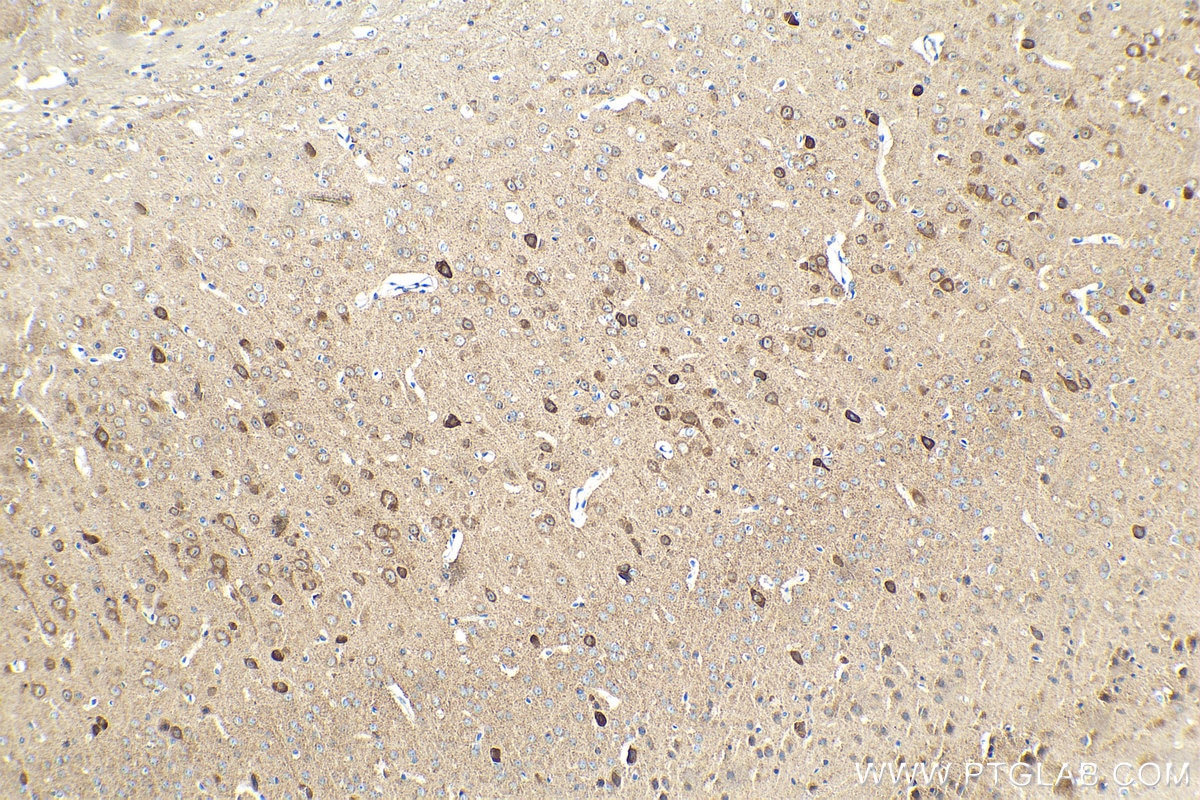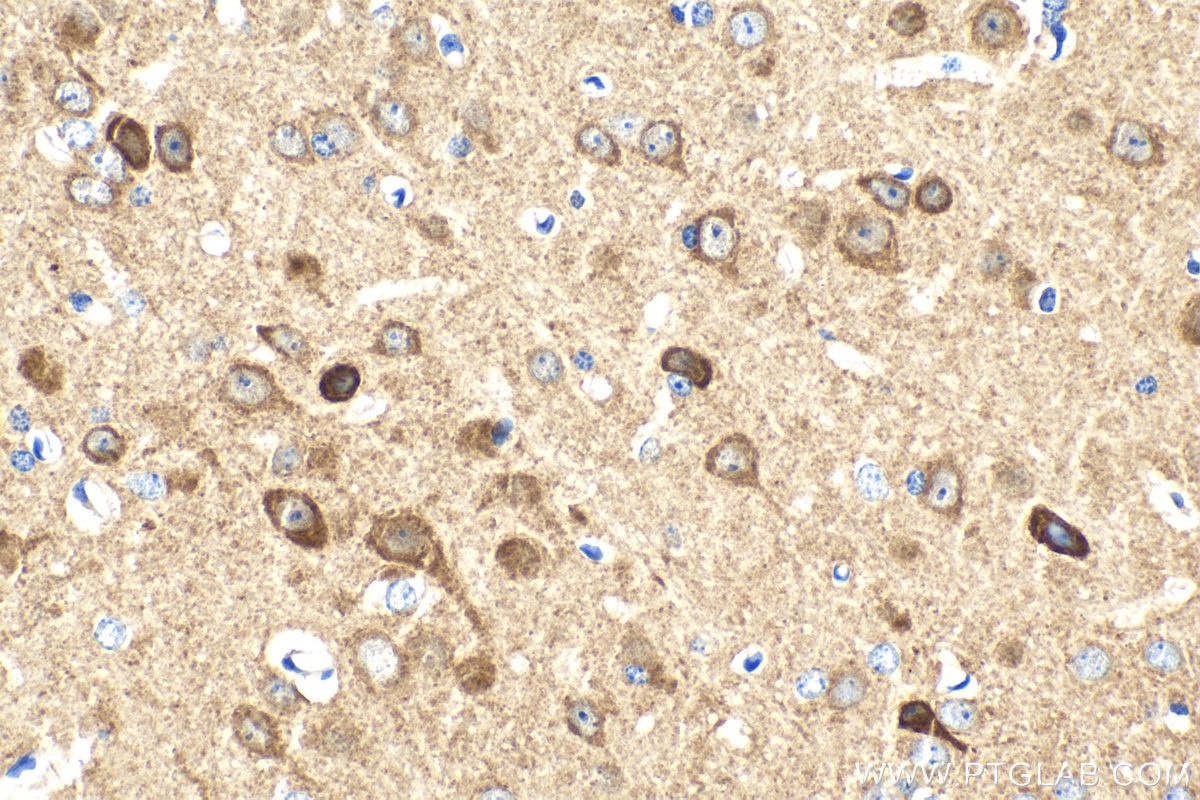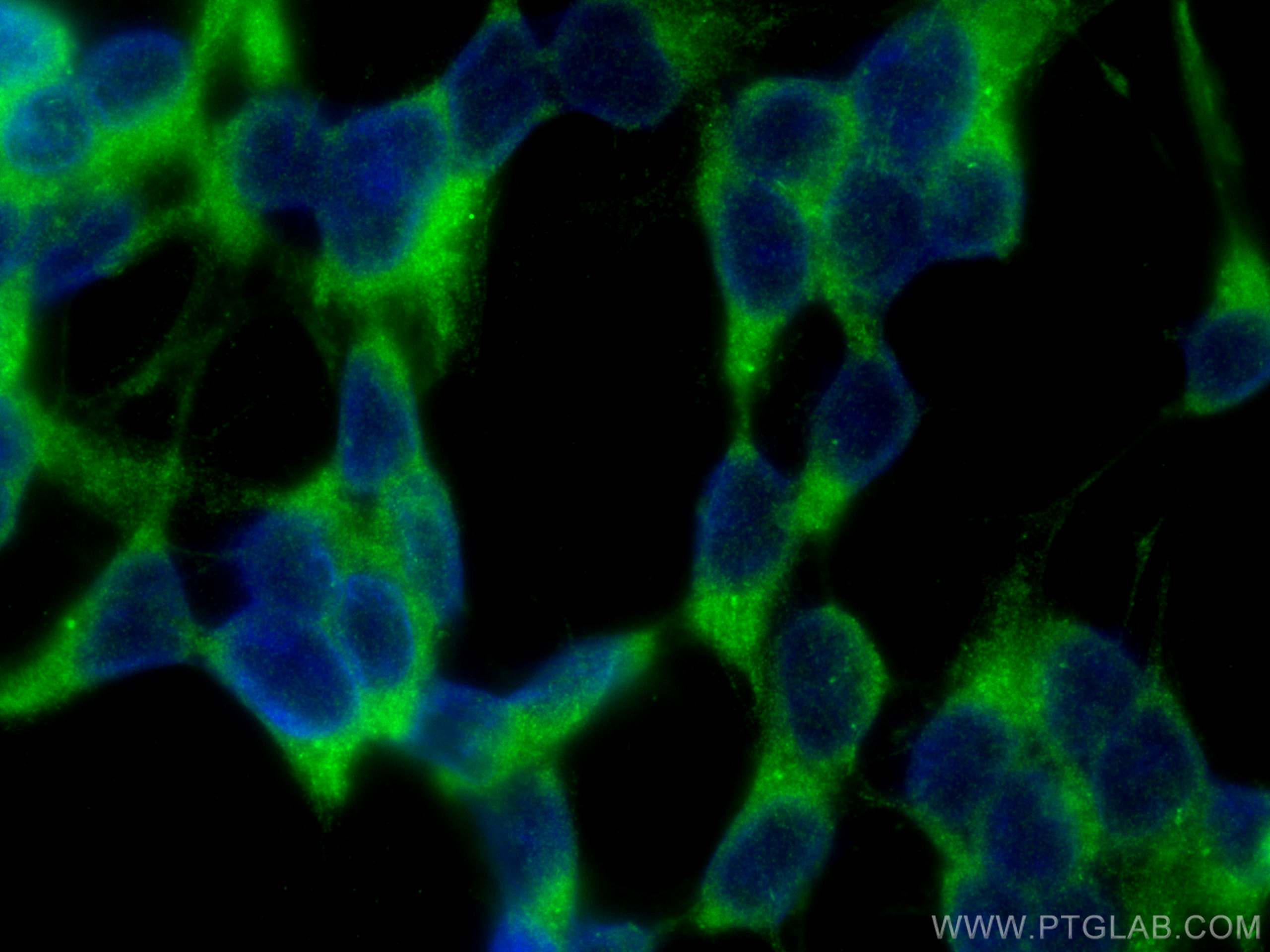Anticorps Polyclonal de lapin anti-CPLX1
CPLX1 Polyclonal Antibody for WB, IHC, IF/ICC, ELISA
Hôte / Isotype
Lapin / IgG
Réactivité testée
Humain, rat, souris et plus (1)
Applications
WB, IHC, IF/ICC, ELISA
Conjugaison
Non conjugué
N° de cat : 10246-2-AP
Synonymes
Galerie de données de validation
Applications testées
| Résultats positifs en WB | tissu cérébral de souris, tissu cérébral de rat |
| Résultats positifs en IHC | tissu cérébral de souris, il est suggéré de démasquer l'antigène avec un tampon de TE buffer pH 9.0; (*) À défaut, 'le démasquage de l'antigène peut être 'effectué avec un tampon citrate pH 6,0. |
| Résultats positifs en IF/ICC | cellules SH-SY5Y, |
Dilution recommandée
| Application | Dilution |
|---|---|
| Western Blot (WB) | WB : 1:2000-1:10000 |
| Immunohistochimie (IHC) | IHC : 1:500-1:2000 |
| Immunofluorescence (IF)/ICC | IF/ICC : 1:200-1:800 |
| It is recommended that this reagent should be titrated in each testing system to obtain optimal results. | |
| Sample-dependent, check data in validation data gallery | |
Applications publiées
| WB | See 6 publications below |
| IHC | See 1 publications below |
| IF | See 1 publications below |
Informations sur le produit
10246-2-AP cible CPLX1 dans les applications de WB, IHC, IF/ICC, ELISA et montre une réactivité avec des échantillons Humain, rat, souris
| Réactivité | Humain, rat, souris |
| Réactivité citée | Humain, souris, Macaque |
| Hôte / Isotype | Lapin / IgG |
| Clonalité | Polyclonal |
| Type | Anticorps |
| Immunogène | CPLX1 Protéine recombinante Ag0387 |
| Nom complet | complexin 1 |
| Masse moléculaire calculée | 15 kDa |
| Poids moléculaire observé | 15-20 kDa |
| Numéro d’acquisition GenBank | BC002471 |
| Symbole du gène | CPLX1 |
| Identification du gène (NCBI) | 10815 |
| Conjugaison | Non conjugué |
| Forme | Liquide |
| Méthode de purification | Purification par affinité contre l'antigène |
| Tampon de stockage | PBS with 0.02% sodium azide and 50% glycerol |
| Conditions de stockage | Stocker à -20°C. Stable pendant un an après l'expédition. L'aliquotage n'est pas nécessaire pour le stockage à -20oC Les 20ul contiennent 0,1% de BSA. |
Informations générales
Complexin 1 (CPLX1) is a member of the complexin/synaphin gene family, which are cytosolic proteins that function in synaptic vesicle exocytosis. Complexins are enriched in neurons where they colocalize with syntaxin and SNAP-25. Complexins bind weakly to syntaxin alone and not at all to synaptobrevin and SNAP-25, but strongly to the SNAP receptor-core complex composed of these three molecules. Compexins also compete with alpha-SNAP for binding to the core complex but not with other interacting molecules, including synaptotagmin I, and regulate the sequential interactions of alpha-SNAP and synaptotagmins with the SNAP receptor during exocytosis. CLPX1 binds to the SNAP receptor complex and disrupts it, leading to the release of transmitters. Alterations of complexins may contribute to the molecular substrate for abnormalities of neural connectivity in severe mental disorders.
Protocole
| Product Specific Protocols | |
|---|---|
| WB protocol for CPLX1 antibody 10246-2-AP | Download protocol |
| IHC protocol for CPLX1 antibody 10246-2-AP | Download protocol |
| IF protocol for CPLX1 antibody 10246-2-AP | Download protocol |
| Standard Protocols | |
|---|---|
| Click here to view our Standard Protocols |
Publications
| Species | Application | Title |
|---|---|---|
Mol Ther MicroRNA137-loaded lipid nanoparticles regulate synaptic proteins in the prefrontal cortex | ||
Cell Rep The complement inhibitor CD59 is required for GABAergic synaptic transmission in the dentate gyrus | ||
J Neurosci Loss of Protein Arginine Methyltransferase 8 Alters Synapse Composition and Function, Resulting in Behavioral Defects. | ||
Free Radic Biol Med NOX2 Deficiency Ameliorates Cerebral Injury by Reduction of Complexin II-mediated Glutamate Excitotoxicity in Experimental Stroke. | ||
J Virol Acute Simian Varicella Virus Infection Causes Robust and Sustained Changes in Gene Expression in the Sensory Ganglia. |





